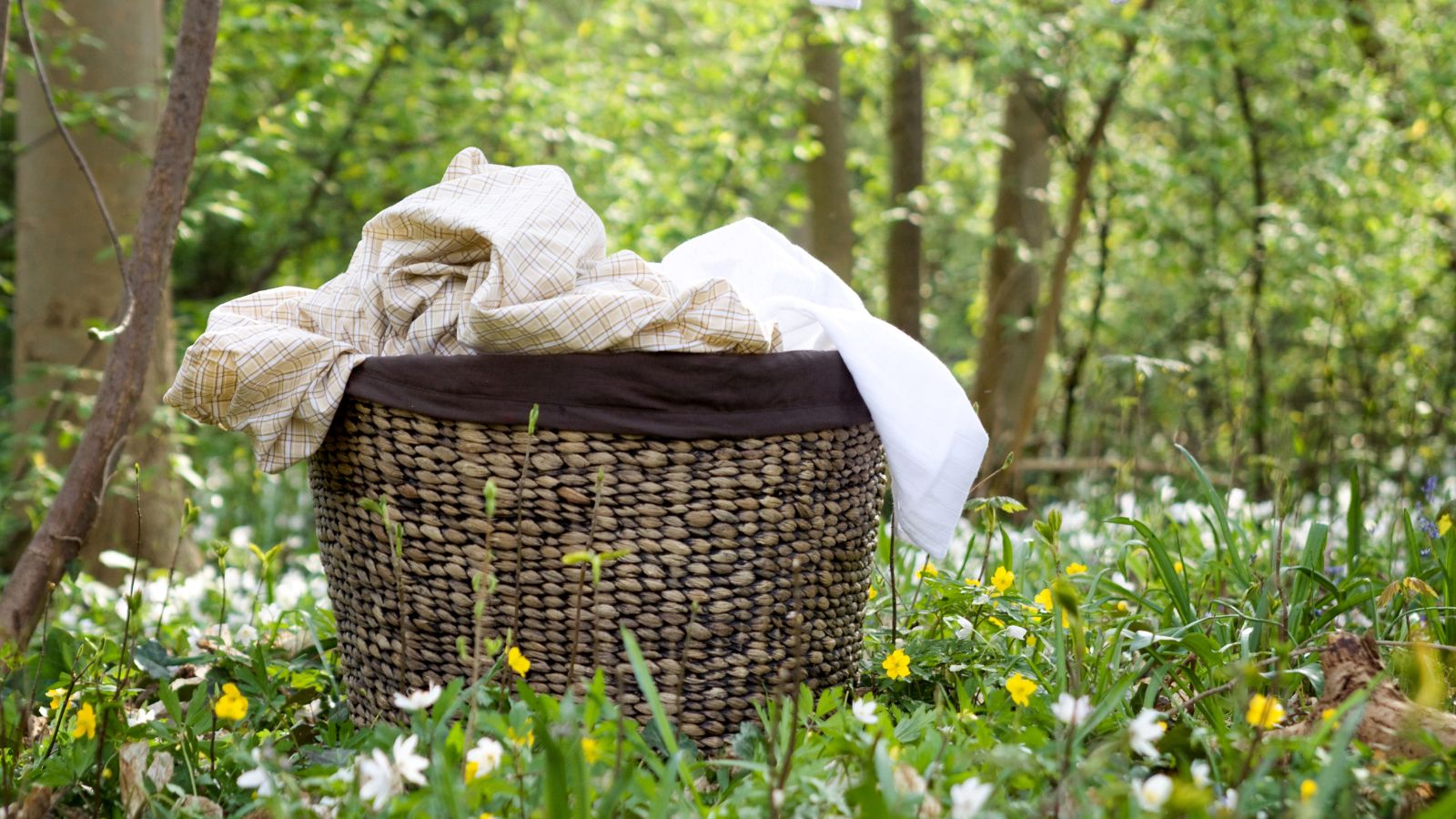
Pollen is irritating at the best of times, especially if you have hay fever – but it is more so when it settles onto our clothing and leaves sticky yellow stains all over our patio cushions. But how do you remove pollen stains from fabric?
When doing laundry in summer, pollen stains need a special kind of treatment to prevent the yellow hues from discoloring our clothing and lingering allergens from continuing to set us off sneezing – and time could be of the essence when it comes to these tricky stains, experts warn.
Here, Darenton Randall, Tide scientist and fabric care consultant at P&G has revealed his secrets for removing pollen stains from fabric for a fresh summer.
How to remove pollen stains from fabric
If you have ever tried to clean pollen off a porch or tried out some cleaning tips for allergy sufferers, then you will be familiar with just how tricky a substance pollen can be. Not only does it get everywhere, but it is a nightmare to clean and is often hydrophobic, meaning plain water can make the situation worse.
This is because of a pigment compound called carotenoids, Darenton Randall, a Tide scientist explains. ‘This pigmented stain can be difficult to remove without the use of a high-quality detergent that contains powerful surfactants and enzymes designed to combat tough stains,’ he explains.
When it comes to tackling those pesky pollen stains on clothes or fabrics, a few considerations are key:
1. Check the care label on your clothing
Before starting any laundry project, it is important to check your fabric's care label and its laundry symbols first, Darenton reminds us. Especially if you are working on a new fabric such as cleaning outdoor cushions.
‘Different fabrics have distinct care requirements and following the recommended cleaning methods will ensure optimal results, alter the cleaning method accordingly.’
2. Act quickly
As with getting a stain out of a white shirt, acting quickly is essential when it comes to pollen stains, Darenton warns. This is because pollen sets in quickly, resulting in very difficult-to-remove stains. Leave it too long, and you may not be able to remove the stain at all.
You should start by pushing away the loose pollen from the site. ‘A soft-bristled brush or a clean cloth will help you gently brush off any loose pollen from the fabric's surface before treating the stain,’ Darenton recommends. ‘This prevents further spreading or embedding of the pollen. If the stain is on clothing or fabric, give it a good shake outdoors to remove loose pollen if you are worried about pressing the pollen further into the fibers.’
3. Never skip pre-treatments
Pre-treatments for laundry are underused, and it is one of the most commonly skipped steps in the laundry process. When it comes to treating pollen stains (or any stains like getting rid of chocolate stains or getting rid of red wine stains), however, it is essential, Darenton says.
‘You can pre-treat the affected area by rinsing the stain under cold water and then pouring Tide Ultra Oxi Liquid Detergent with Odor Eliminators, available at Target on it and letting it set for five minutes. This will help to break down the stain while you set up a laundry load.’
4. Use a high-quality detergent in cold water
Using a high-quality detergent really does make all the difference when doing laundry, as does knowing where to put liquid laundry detergent in the washing machine.
Darenton recommends using Tide Ultra Oxi Power Pods and Odor Eliminators, available at Target that are designed to attack pesky stains and do so in colder water temperatures, helping you save money on laundry too.
‘Higher quality, trusted detergents will contain powerful surfactants and enzymes suited for the job of tackling stains,’ he explains.
5. Allow to dry somewhere indoors, or in a tumble dryer
When the fabric has been washed, it is important to dry it somewhere away from further pollen contamination – especially when it is wet and pollen can cling more easily, adds Millie Hurst, Solved section editor at Homes & Gardens.
‘This is a rare case when I don’t recommend line drying,’ she says. ‘If you are particularly susceptible to hayfever, make sure to dry your fabrics in a tumble dryer, or for fabrics not suited to your machine, dry somewhere indoors away from open windows and doors,’
FAQs
Does pollen permanently stain?
If left untreated, or treated incorrectly, pollen stains can permanently stain and discolor any kind of fabric, from clothing to outdoor materials used on garden furniture. Once they have set in, they can be near impossible to shift, but when treated immediately, they often come away with little to no evidence left behind.
Does washing clothes get rid of pollen allergens?
Washing your clothes correctly with a good detergent can help to clear away pollen allergens clinging to your clothing. If your allergies are particularly bad, it can be a good idea to ensure your clothes dry somewhere away from open windows after laundering to prevent pollen from blowing in and settling on your freshly washed laundry. You should also wipe down shoes, or leave them at the door, to avoid trampling pollen through your home.
When treating stains and removing pollen stains from fabric, it is important to remember that ‘different fabrics and surfaces may require specific cleaning methods,’ Darenton Randall, Tide scientist concludes. ‘So while it is important to get straight on with treating the stain, don't rush head first into anything without checking the care labels and following any manufacturer's instructions.’







